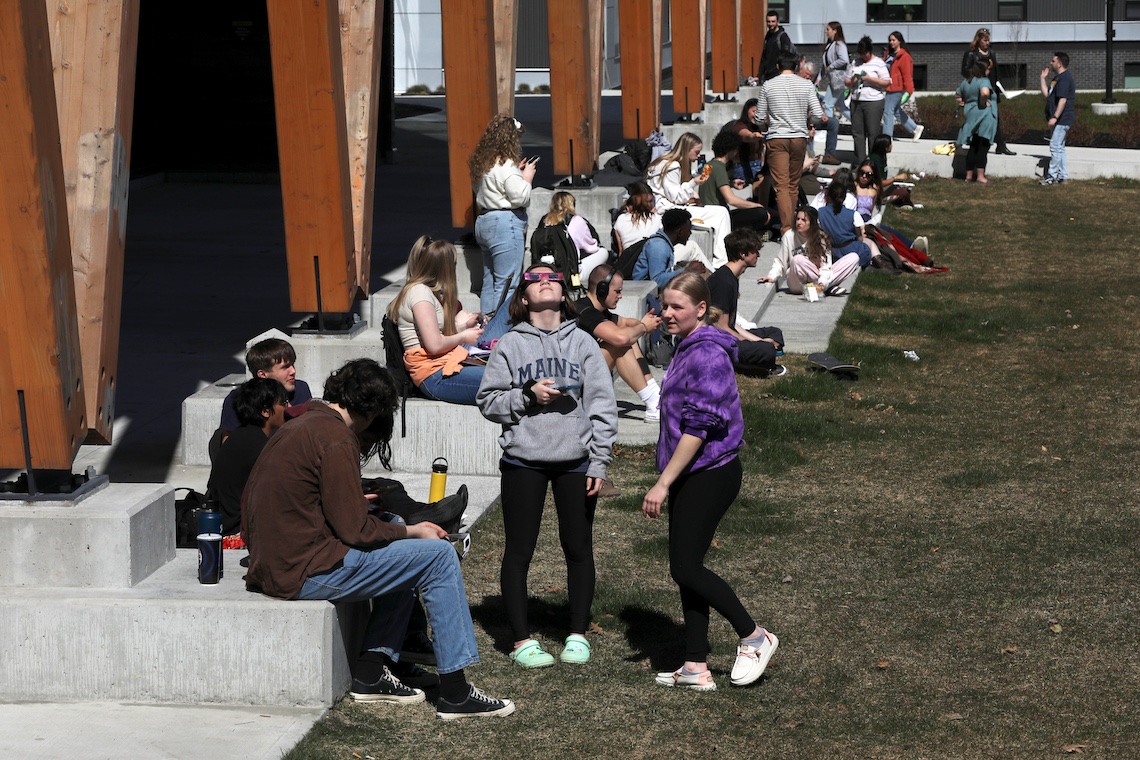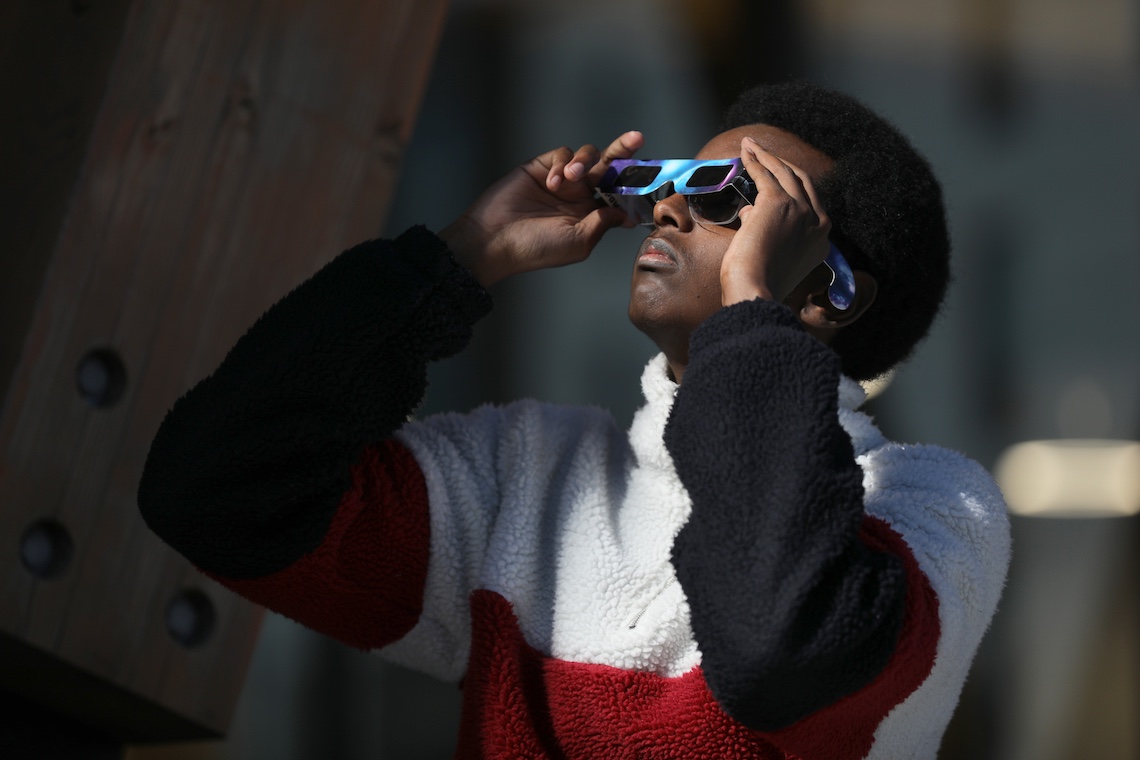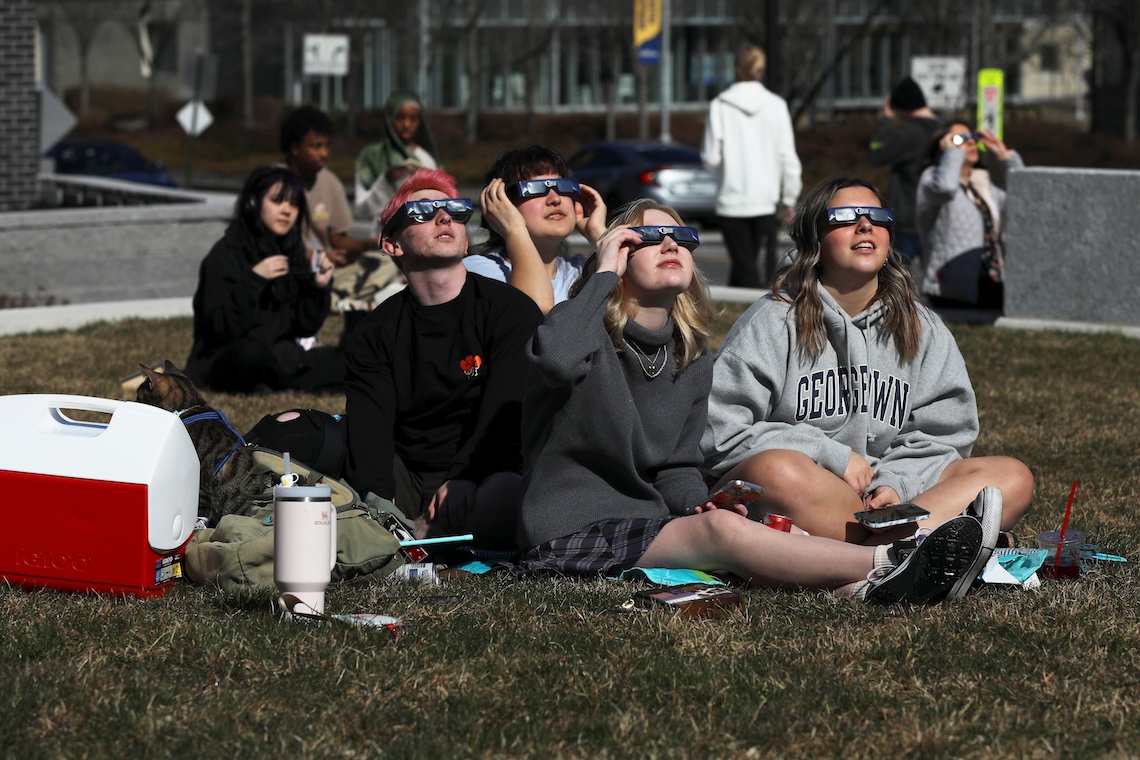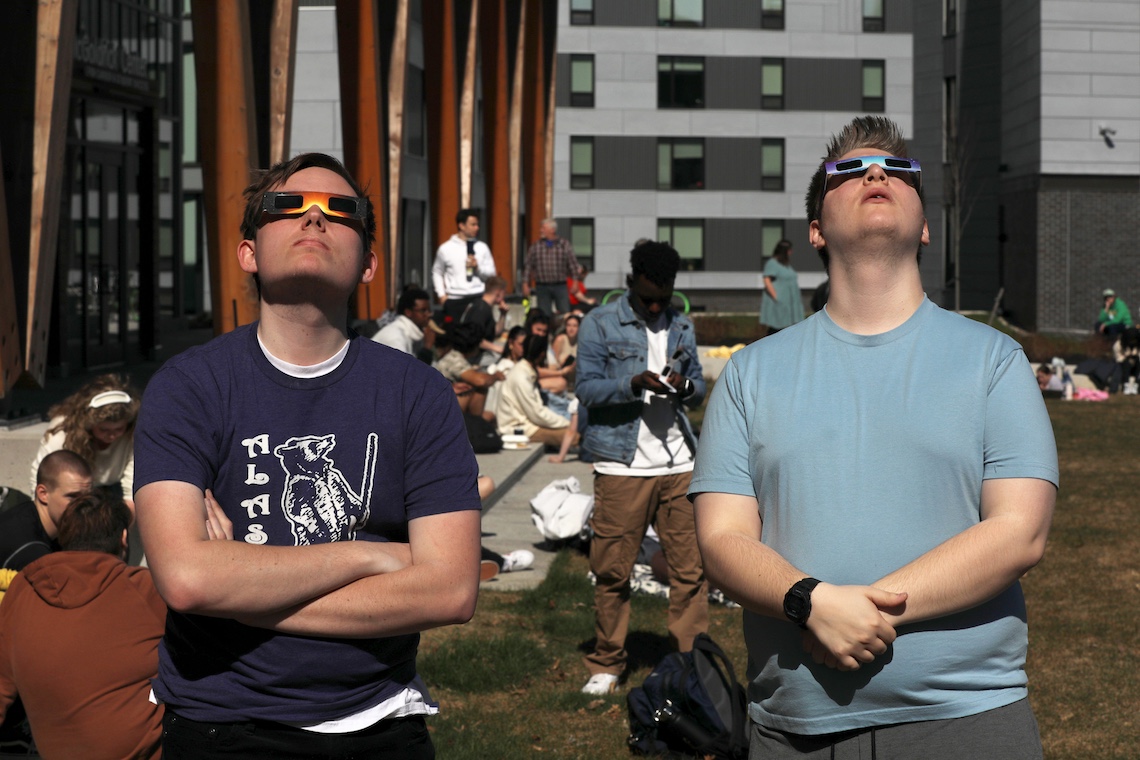
For months, the Southworth Planetarium was the University of Southern Maine’s hub of excitement in the lead-up to the total solar eclipse. That excitement spread campus-wide when the day finally arrived on Monday, April 8.
How rare is a total eclipse? The most recent previous occurrence in the United States took place in 2017 along a path from Oregon to South Carolina. Alaskans will get the next sighting in 2033, while viewers in the lower 48 states will need to wait until 2044.
The desire to witness history on Monday created a boom in eclipse tourism to parts of the country from Texas to Maine where the totality was visible. The path of full coverage veered north of USM’s three campuses. But with more than 96% of the sun blacked out, the sight was still impressive.
Interest in the eclipse began building as early as a year in advance. Reporters often turned to Southworth Planetarium Director Edward Herrick-Gleason for an explanation of the science behind the phenomenon. The media attention led to a surge of visitors to the planetarium. Shows about the eclipse regularly sold out in the weeks before April 8.

In addition to providing its visitors with information, the planetarium also provided them with safety glasses so they could look at the eclipse without damaging their eyes. Herrick-Gleason stocked 10,000 pairs. The last of them sold out on Monday morning, just a few hours before they’d be put to use.
Even the best laid plans were still at the weather’s mercy. An overcast day would ruin the view. Herrick-Gleason prepared for that possibility by running NASA’s livestream of the eclipse inside the planetarium. Instead, the southern Maine skies remained perfectly clear for ideal visibility.
“Almost everyone wanted to be outside to be part of this fleeting, but wondrous spectacle,” Herrick-Gleason said. “I suspect that observers within the totality path might well harbor a deep fondness for astronomy owing to the eclipse and that, in and of itself, will induce them to develop a greater interest in this strangely fascinating, unfathomably complex universe.”
Each USM campus designated official viewing areas, but people ultimately came together spontaneously at whatever place they liked best. One of the biggest crowds formed in Portland on the Bean Green in front of the McGoldrick Center.

The first onlookers began claiming seats by 2 p.m. The green was still spongy from the recent snow melt. Most people sat along the paved perimeter, although a few spread blankets across the wet grass.
Out came the safety glasses at 2:17 p.m. as the sun first began to darken. In some groups, only one or two friends came prepared, and their glasses made the rounds so everyone got a turn to look.
The eclipse peaked for three minutes around 3:30 p.m. At the same time, the energy of the crowd also reached its peak. The impact registered in different ways. Many viewers pointed skyward. Some shouted their approval. Still others stood stock still in silent awe.
Several of the students in attendance shared the following thoughts about what might be, for many of them, a once-in-a-lifetime experience.
- Tanner McClure (graduate student/Leadership Studies): “I think it’s just cool that it brings everyone together. It’s not very often this happens. It’s a pretty cool experience.”
- Alex Curtis (doctoral student/Occupational Therapy): “It’s really incredible. I’ve never seen anything like this. And it’s so fun sharing this experience with everyone else, taking turns with the glasses and getting to see everyone’s face when they see it for the first time.”
- Ray Grika (junior/Biotechnology): “I have a very scientific-oriented brain, so in my brain it’s, ‘Oh, that’s a cool coincidence.’”
- Anevay Moody (junior/Health Sciences): “I got to see the last one. I was over in Boothbay (Maine). The moon only covered the sun just a little bit, so I wanted to see a lot more. . . I love it. I think it’s really cool. I was really excited. I’ve been counting down for this for pretty much all week.”
- Jadon Chenard (sophomore/Information Technology): “I’ve never seen something so beautiful and something so cool at the same time. It’s just amazing. Once you look through the glasses, it’s like a whole new world opens up.”
- Rex Holland (SMCC student living at USM/Art): “I am waiting for all the animals to start freaking out.”
- Ashley Goodridge (junior/Social and Behavioral Sciences/Psychology): “I think it’s really cool. It’s unlike anything I’ve ever experienced before. A lot of fun.”
- Fatima Alsiraj (freshman/undeclared): “Honestly? I didn’t even hear about it until yesterday. I was wondering why people were grabbing glasses. I’m that oblivious. I wasn’t even aware. But it’s really cool.”


